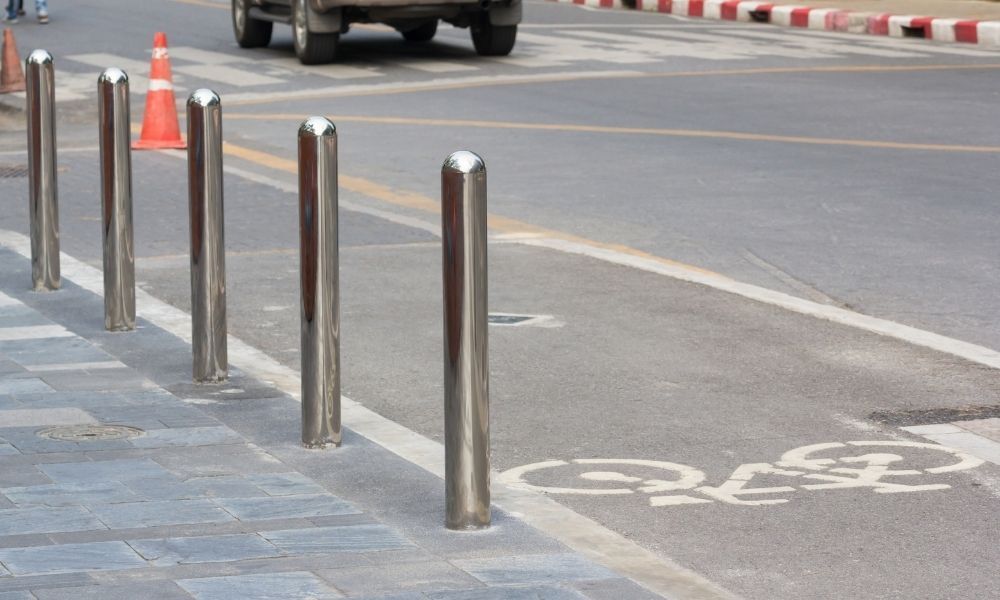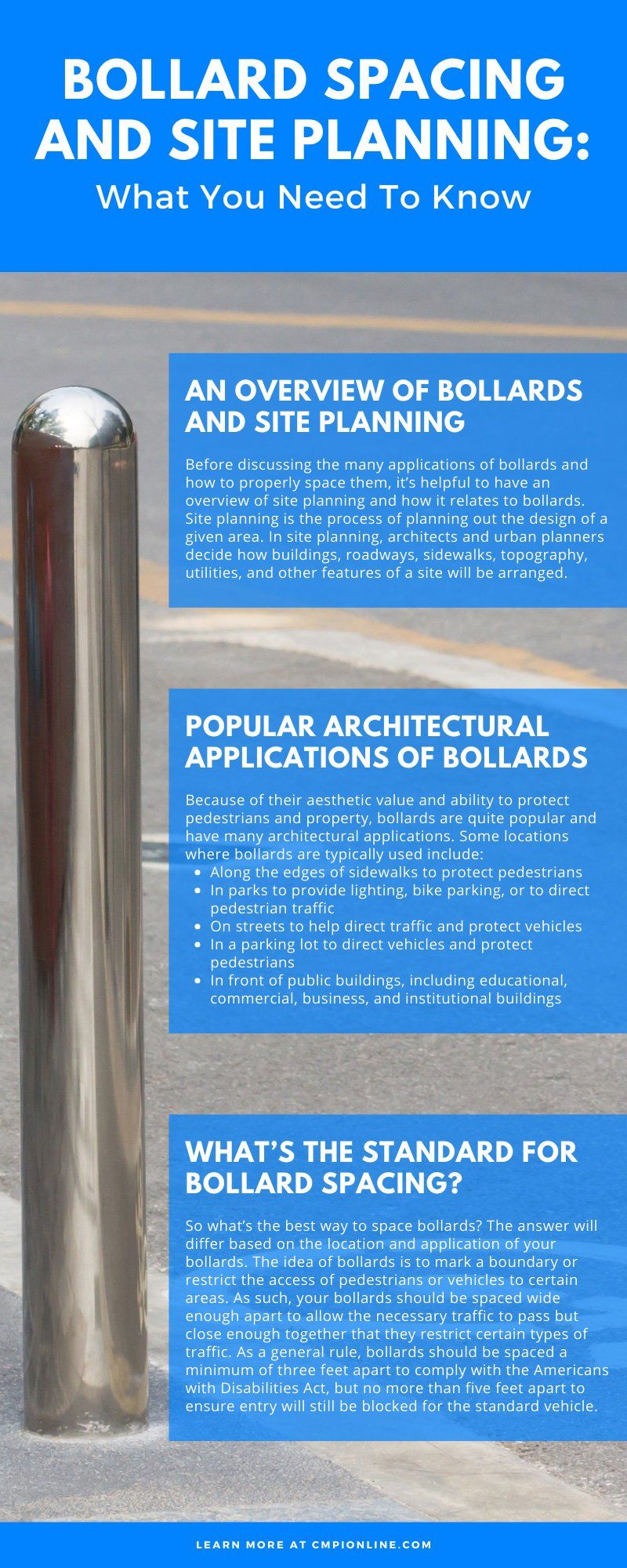Bollard Spacing and Site Planning: What You Need To Know

When you think of site planning, buildings, sidewalks, and landscaping likely pop into your mind. But what about bollards? Bollards are a key part of many architectural projects, yet most people hardly give them a second glance. Despite this, bollards play an important role, and anyone involved in site planning should be sure to consider bollards as they create that plan. This is what you need to know about bollard spacing and site planning.
An Overview of Bollards and Site Planning
Before discussing the many applications of bollards and how to properly space them, it’s helpful to have an overview of site planning and how it relates to bollards. Site planning is the process of planning out the design of a given area. In site planning, architects and urban planners decide how buildings, roadways, sidewalks, topography, utilities, and other features of a site will be arranged. This enables both planners and those who will enact the plan to have a clear understanding of how an area will be laid out once construction is complete. It also helps them identify any potential issues with the plan for the area before it is already built and too late to fix.
Bollards are one architectural element that site planners must consider. Although they are not the biggest part of a site, they are present almost everywhere and play an important role in keeping people and property safe, as well as providing a decorative element to the grounds.
Popular Architectural Applications of Bollards
Because of their aesthetic value and ability to protect pedestrians and property, bollards are quite popular and have many architectural applications. Some locations where bollards are typically used include:
- Along the edges of sidewalks to protect pedestrians
- In parks to provide lighting, bike parking, or to direct pedestrian traffic
- On streets to help direct traffic and protect vehicles
- In a parking lot to direct vehicles and protect pedestrians
- In front of public buildings, including educational, commercial, business, and institutional buildings
If your site plan includes any such buildings or areas, you’ll likely need to add bollards and consider their layout and spacing before beginning construction.
What’s the Standard for Bollard Spacing?
So what’s the best way to space bollards? The answer will differ based on the location and application of your bollards. The idea of bollards is to mark a boundary or restrict the access of pedestrians or vehicles to certain areas. As such, your bollards should be spaced wide enough apart to allow the necessary traffic to pass but close enough together that they restrict certain types of traffic. As a general rule, bollards should be spaced a minimum of three feet apart to comply with the Americans with Disabilities Act, but no more than five feet apart to ensure entry will still be blocked for the standard vehicle.
Tips for Spacing Bollards Well
In most cases, following this rule is the way to go. However, when planning bollard spacing for your site, you’ll also want to consider the following factors.
Consider Your Type of Bollards
What type of bollards are you installing on your property? Are they permanent? Removable? Retractable? Lighted? Knowing which type of bollard you’ll be using will help you understand how far apart to space them. Removable or retractable bollards can easily be taken down to allow the entry of larger vehicles and thus can afford to be spaced closer together. When installing a fixed bollard, however, the spacing you choose will become a permanent barrier, so you’ll need to consider which kinds of traffic, if any, you want to allow into an area and what the spacing should be prior to installing the bollards. Other types of bollards, such as lighted bollards or bike parking bollards, may have a dual purpose and thus should be spaced close enough together to fulfill both purposes. For example, a row of lighted bollards should be close enough to thoroughly light an area without dark spaces in between.
Consider the Purpose of Your Bollards
The spacing you choose for your bollards will be largely dependent upon the purpose of the bollards. Are they designed to restrict traffic to a certain area? Are they mainly there to provide a visual barrier between one part of your property and the other? If your bollards are intended to bar vehicles from entry into an area, they should be spaced between three and five feet apart, as any space greater than five feet would allow some vehicles to enter. If the purpose of your bollards is to block pedestrian traffic, they can be fairly close together, and you could even add chains between your bollards to make the restriction especially clear.
Consider the Aesthetic
The appearance of your chosen bollards is not the only thing that impacts their aesthetic—the amount of distance you put between your bollards will inevitably impact the aesthetic of your property. A row of tightly spaced bollards will look more intimidating and unwelcoming than a row of bollards that is more widely spaced. Of course, the material of which your bollards are made will also make a big difference in your property’s appearance—bright yellow traffic bollards would look right at home between lanes of traffic on the highway or in a parking lot but would look rather unprofessional in the plaza of a fancy hotel, museum, or other public building. Stainless steel bollards are always a good choice if you want an attractive, durable bollard.
Site design is not something to be taken lightly, so keep yours up to the standard by considering what you need to know about bollard spacing and site planning before implementing your design. If bollards are a part of your site planning, contact CMPI about our stainless steel bollards and bollard covers. They’ll make a great addition to any property by protecting your assets while giving the space a little decorative flair. We can customize them to your needs and preferences to help you make the site design of your dreams into a reality.






